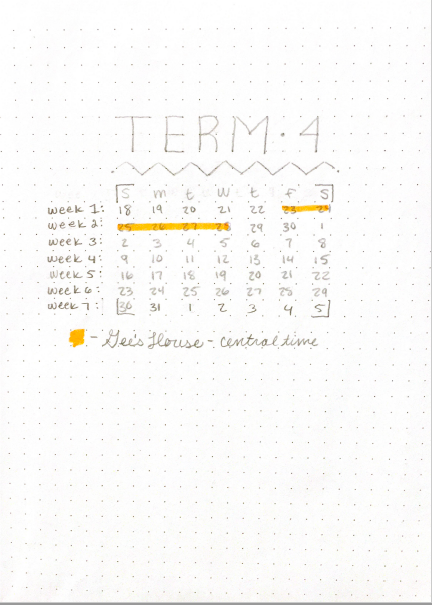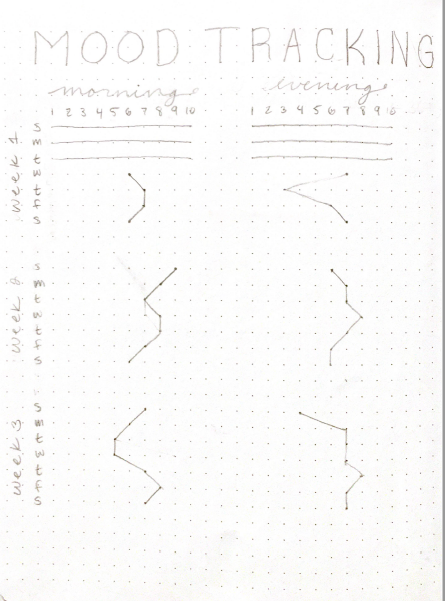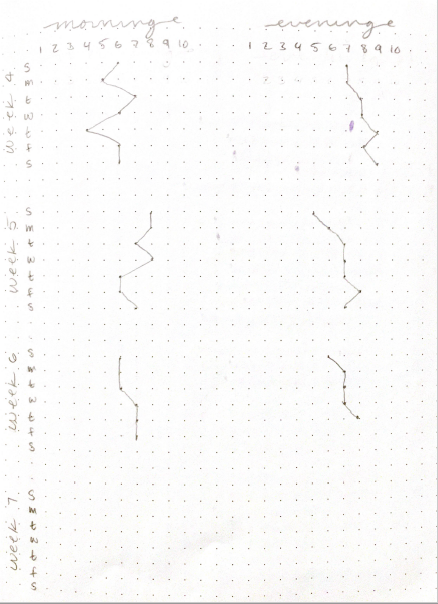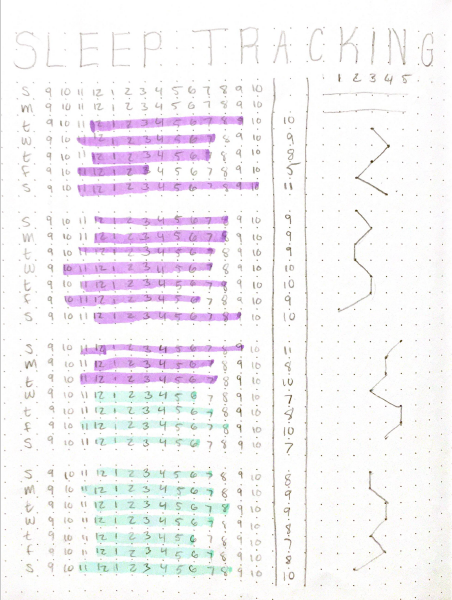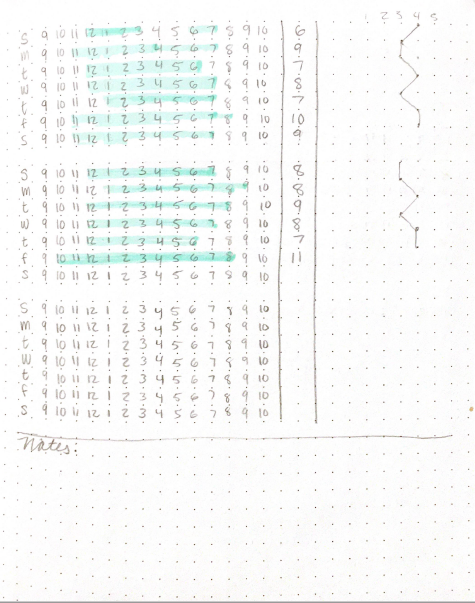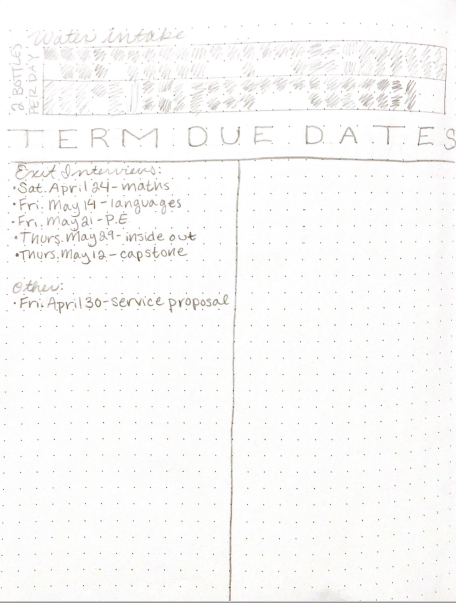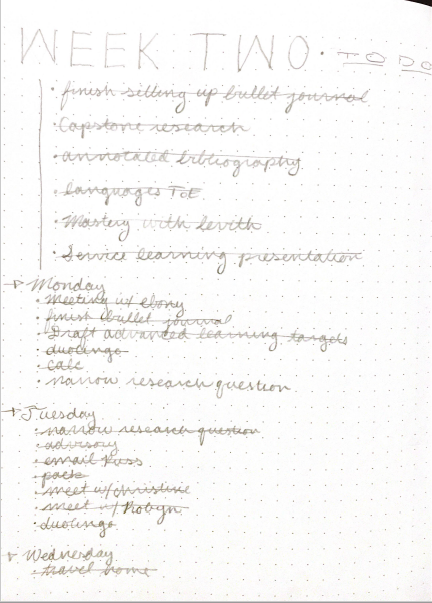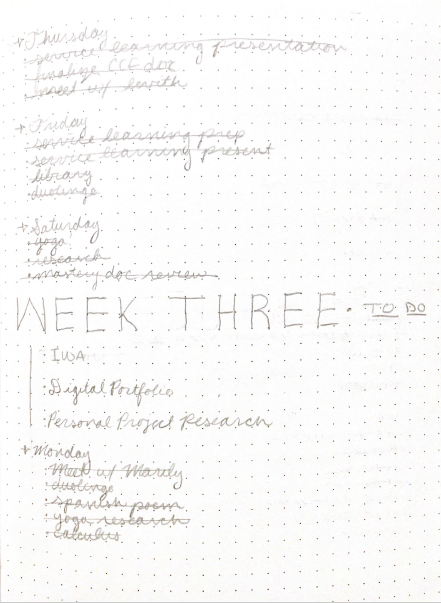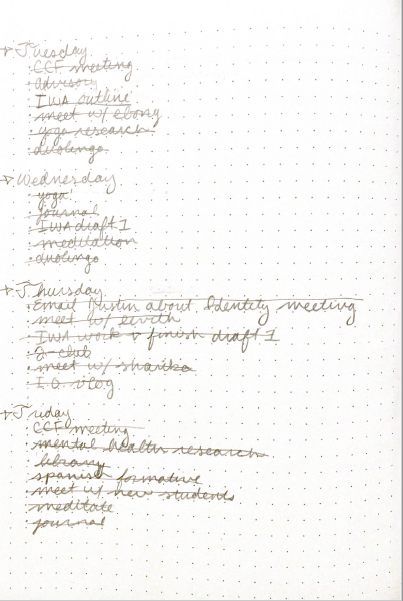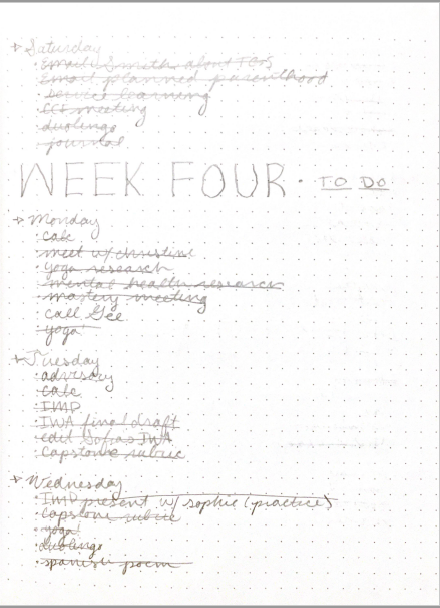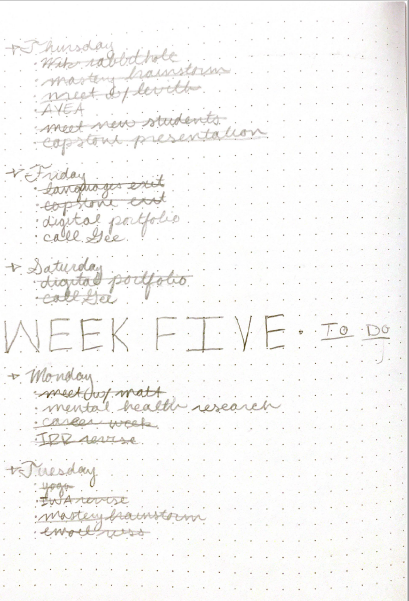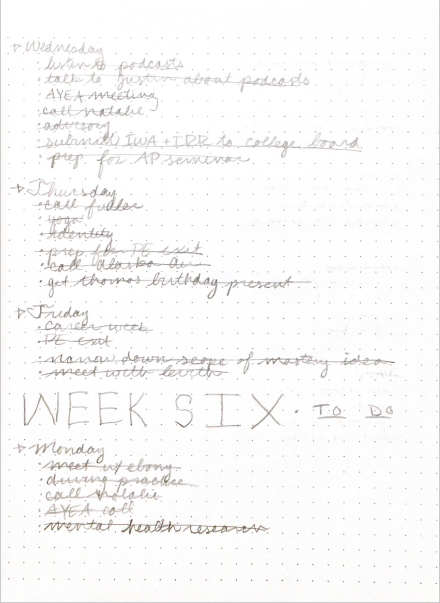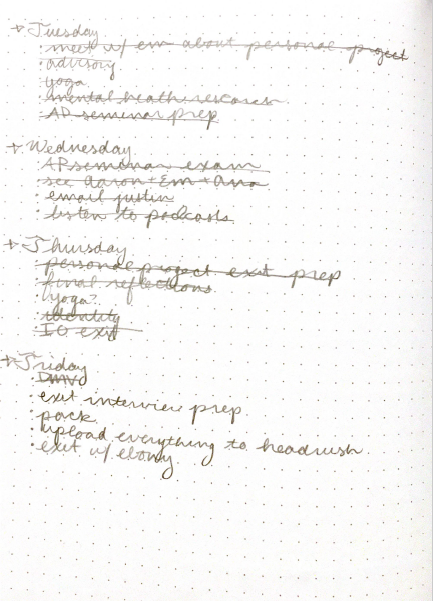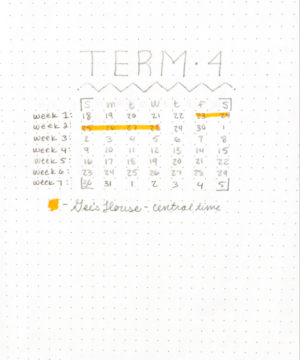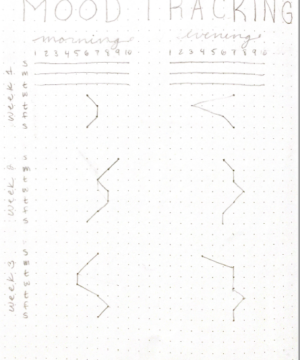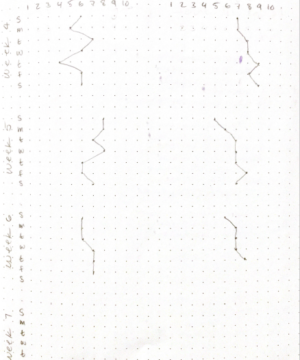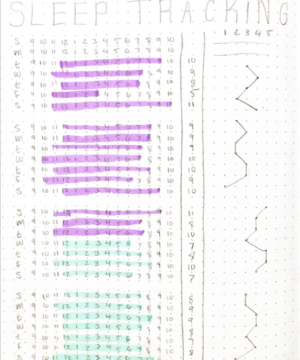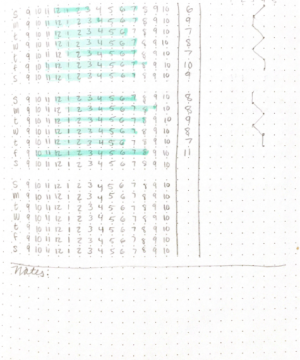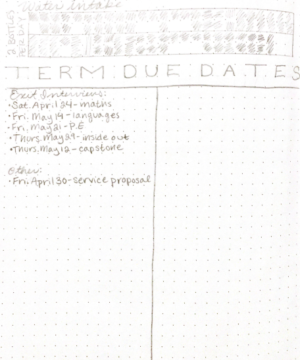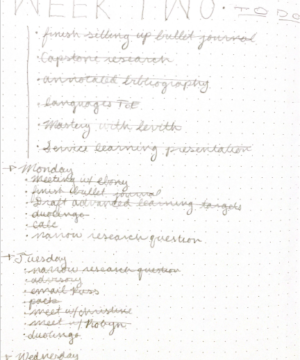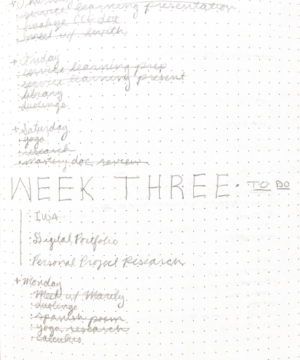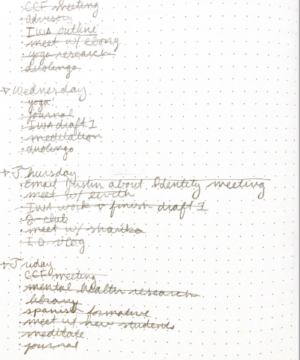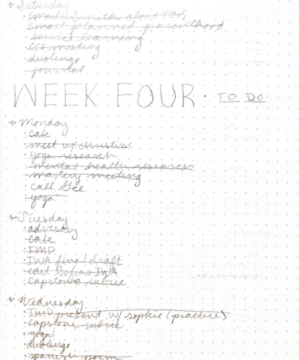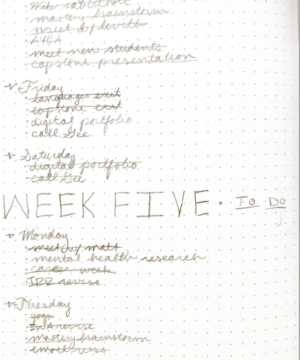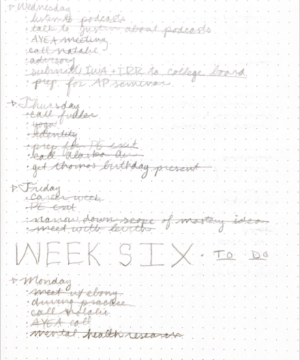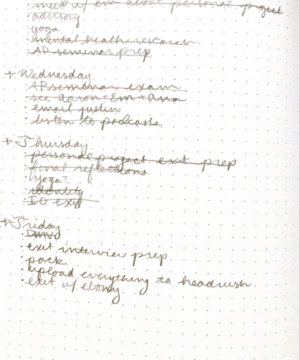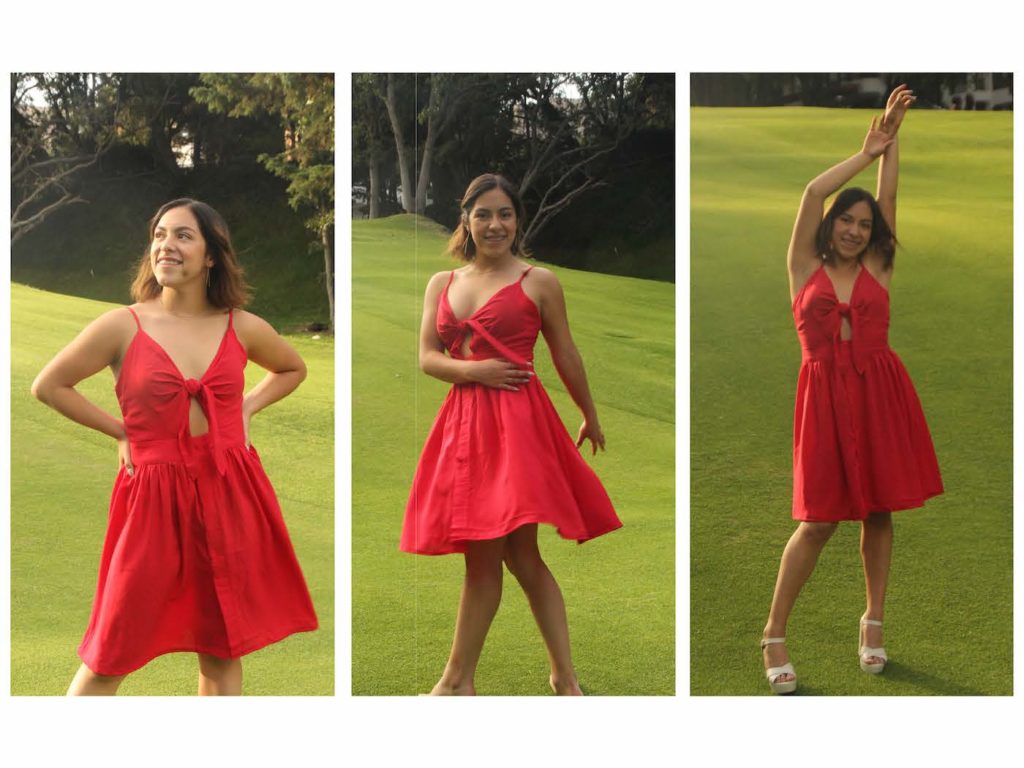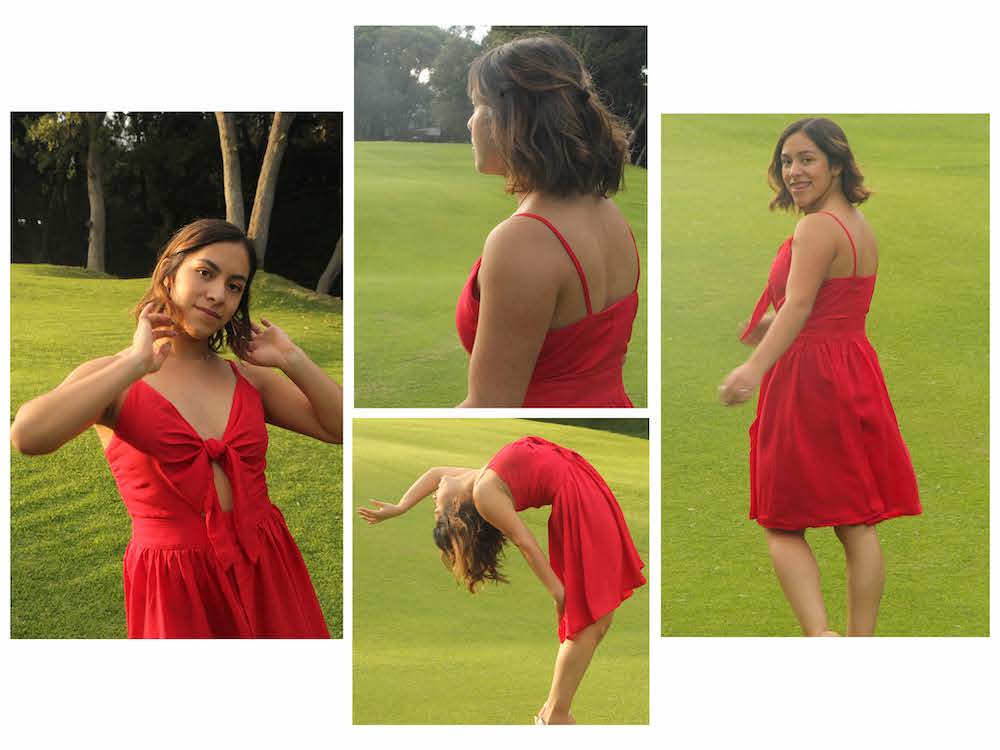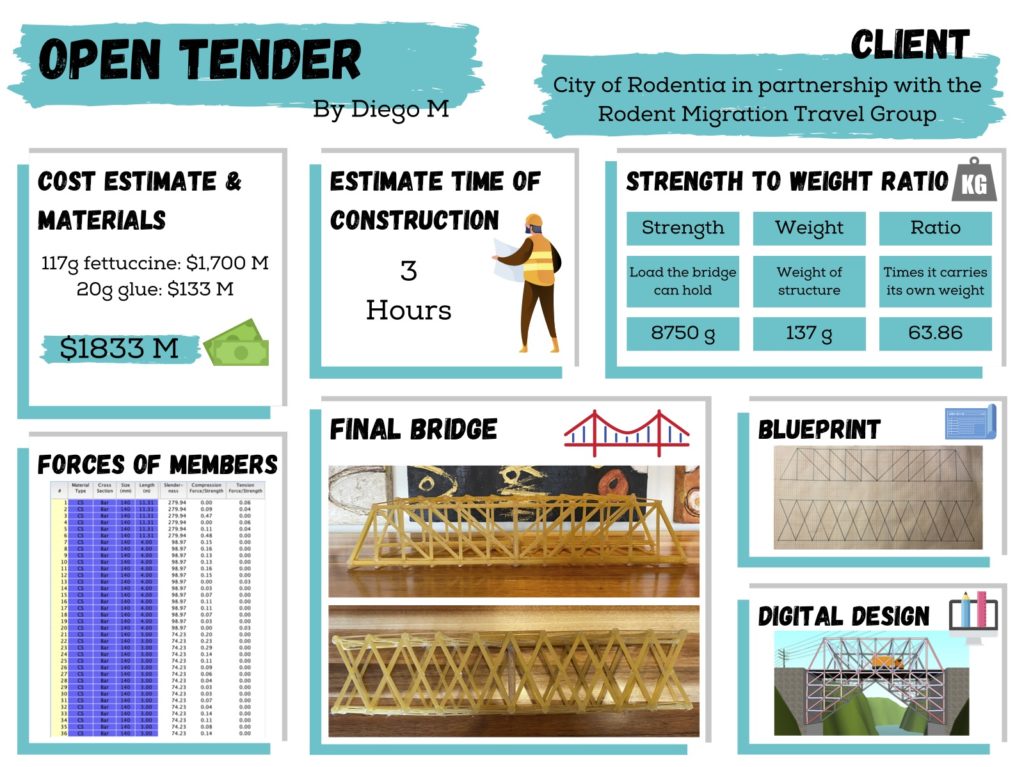Driving Question: How can I improve my mental and physical wellbeing by going offline during an online term?
Module Overview: For this project, I researched the effects of one’s environment on their mental health, particularly in relation to COVID 19, as well as practices and techniques for improving mental and physical wellbeing. I then put these techniques into action through physical activity, yoga, meditation, reflection, and mindfulness in order to improve my own wellbeing. In addition, this project was done entirely offline, with both my research and process portfolio being done on paper. My final product was a bullet journal documenting my experience throughout the term.
Project Reflection: “This project was incredible for me. It might not be one of the projects that seems the most impressive or sounds the coolest, but I think it is the one that has been the most beneficial for me. This has been a hard year, and this project gave me the space to ask myself how it has affected me and what I can do to deal with that. Through this project, I learned how to take care of myself emotionally and physically, and I also learned how important those things are and how much they affect all aspects of my life.”
